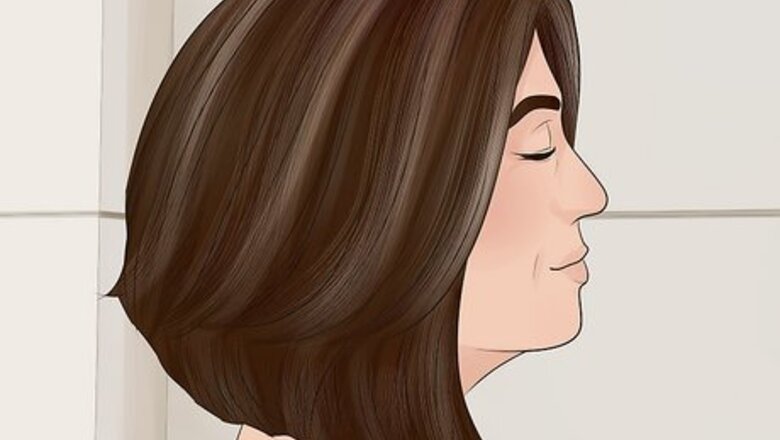
views
- Get highlights, babylights, or balayage that lighten sections of hair so your greys blend in and look natural instead of standing out.
- Try lowlights to add darker shades underneath your greys and create a hairstyle that has more depth.
- Enhance the look of your grey hairs by doing an ombre with a darker color or by using black and light grey dyes for a salt-and-pepper look.
Grey Blending Style Ideas
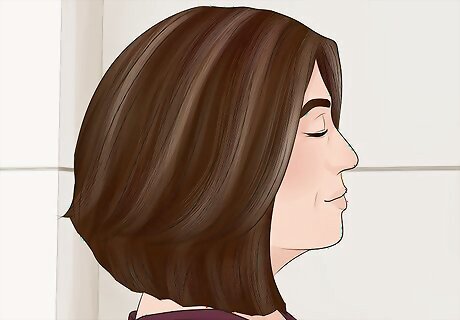
Highlights Adding highlights to your hair helps lighten your natural color so your greys don’t stand out. Because the highlights break up the sections of color in your hair, the blend from dark to grey looks a lot smoother than if you dyed your whole head. Try using ash grey and cool blonde tones for your highlights to help camouflage greys with your natural brown hair. If you want to enhance the look of your greys, get silver or ice blonde highlights. Add golden or honey highlights to give your hair some extra shine while blending your greys. Go with highlights that add a rose-tint to your hair since the pale colors will draw attention away from your greys.
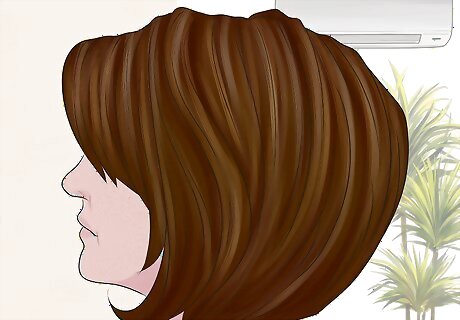
Babylights Babylights are highlights on thinner sections of hair to lighten the natural color and hide your greys. Because the babylights are only small sections of hair and are close together, they create a seamless shift from your greys and your natural color. If you’re just starting to notice grey hairs, then this natural, sun-kissed look is perfect for you. Silver babylights will blend in with the greys already growing in, so they’re the perfect color choice. If you have red or golden tones in your hair, stick with honey or chocolate-colored babylights to bring out the warm undertones. If you have a cool, pale skin tone, then try babylights with a subtle light brown or ash brown hue so they look more natural.

Lowlights Rather than lightening your hair color, lowlights darken sections of your hair by 1–2 shades to give your hair more depth and dimension. If you’re not comfortable with the silver in your hair, then feel free to cover your greys with lowlights. Otherwise, leaving your greys against the darker color will help give your silver streaks a subtle pop. With the addition of highlights, your grey hairs will blend right in and create a more natural color transition. Go for smokey brown lowlights to give your hair depth without looking like it’s done up too much. To embrace your greys, try out silver or grey lowlights to create a trendy and stylish look. For a really dark and dramatic style, accentuate your grey hairs with dark charcoal lowlights that make your silver streaks stand out.
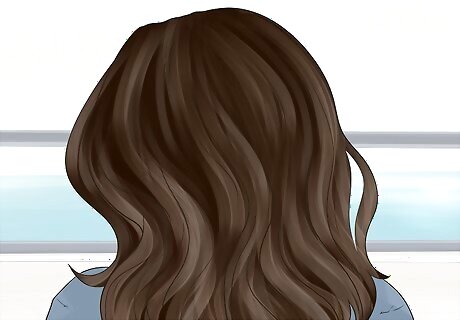
Balayage Similar to highlights and babylights, balayage is a way to lighten your hair starting with fine strands from your scalp and widening to cover a larger section at the ends. Because you apply balayage without any foil, the lightened sections of hair blend in with your greys and make a natural transition to you your darker hair color. Go with a classic blonde balayage to lighten streaks of hair and keep your grey hairs hidden. If you want a subtle shine in your hair, try going with a chocolate brown or chestnut balayage for added dimension. To add a pop of color to your hair, try mixing in red- or violet-tinted balayage with golden-brown highlights. For hair with cool undertones, stick with an ash brown or icy beige balayage to keep your greys camouflaged.
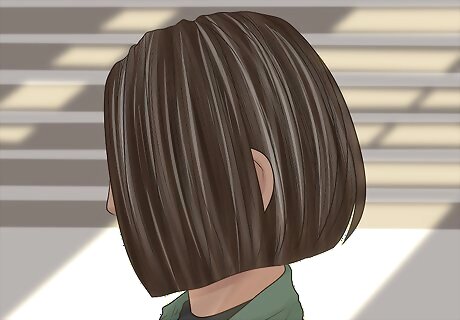
Silver streaks Rather than trying to camouflage your greys, let them show through with long, defined streaks. Start by gathering a section of hair on top of your head and dyeing it your natural color. Leave all the grey hairs alone that are underneath that section. Once the dye sets and you drop your hair back down, your grey streaks will show through and create a trendy style. Add grey streaks to your hair if you want to make your silver fox look stand out even more. As your dyed hair grows out, leave any greys that reappear. Since you have some natural grey hairs on lower layers of your hair, the new growth will blend in for a smoother shift in color. Try adding streaks of ash brown or rose-blonde if you want a more subtle transition between your hair colors.
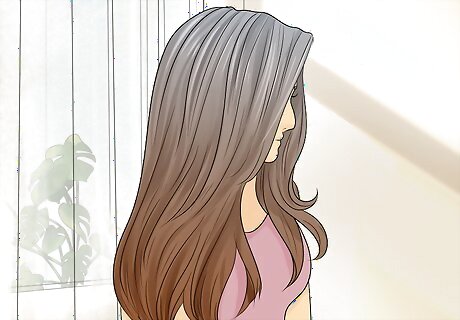
Grombre “Grombre” is short for “grey ombre,” which creates a smooth color transition from your roots to the ends of your hair. If your grey hairs are growing in prominently at your roots, try doing an ombre style that transitions from silver to dark brown for a natural grown-out look. If only a few silver strands are peppered through your hair, then try going from your dark natural color to grey at the ends. If you want some additional color, transition from grey to a pop of red or pink at the ends of your hair. Frame your face with grey ombre streaks for a really striking style that accentuates your features. If you only have a few greys you’re trying to blend, choose a subtle silver color to use for your grombre style.
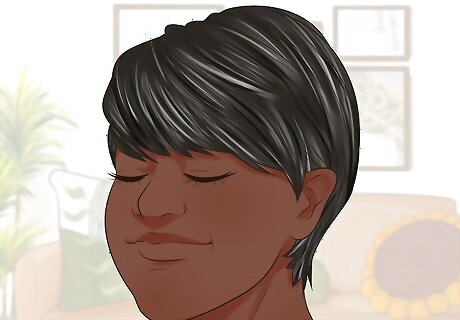
Salt-and-pepper If you want go grey with dark hair and really embrace the “silver fox” look, try dyeing your head a blend of white, black, and grey. This style is perfect if you have a lot of grey roots coming in and want them to blend in with the darker tones at the ends of your hair. Use the lightest white or grey colors around the hair that frames your face and transition to darker shades on the back of your head. Try a reverse ombre where your roots look white or light grey and the ends of your hair are your darker natural color. Use black and darker silver tones as lowlights to give your hair more dimension.
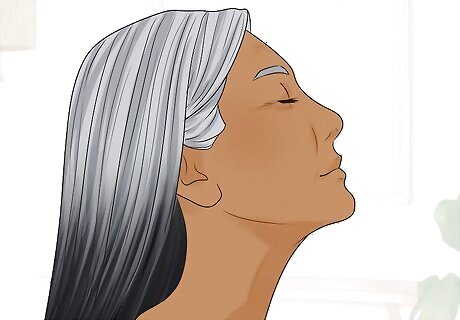
Cold turkey If you have a lot of grey coming in and would rather skip the dyes, let your hair go natural and embrace its look as it grows out. Be patient as your greys come in, and avoid using any permanent dyes that will change the natural hue. It may take a few months for your greys to grow in fully, but your hair will look great throughout the entire process.
Best Colors for Blending Grey Hair

Golden brown If your skin has warm undertones, a golden or chestnut brown color will add a lot of warmth to your highlights or balayage. Choose golden brown to for a really flattering way to add more dimension to your dark brown hair and keep your greys hidden.

Ash brown Ash brown has a cooler undertone that works well if you have paler skin. Since ash brown has a light and cool appearance, it helps bounce light away from your grey hairs so they blend in and look more deliberate.
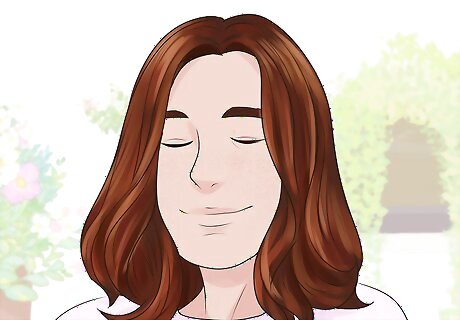
Light auburn If you want your hair to have a redder tone, auburn will accentuate dark brown if you have a cooler skin tone. Auburn can range anywhere from a light brown to a rich mahogany color, so you’re bound to find the perfect shade that complements your natural color.
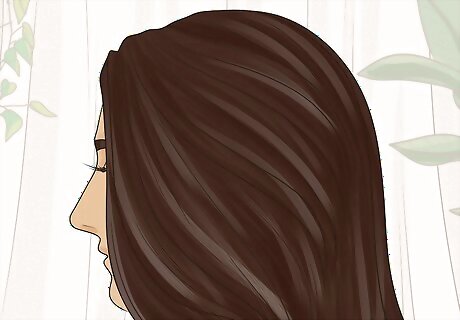
Chocolate brown Choose chocolate brown whenever you want to add a richer, darker shade to your hair. This color helps complement warm and cool tones while creating a smooth transition between your natural color and your greys.
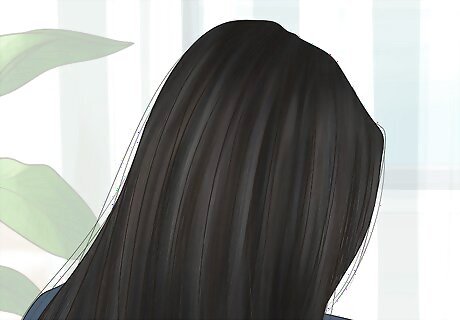
Charcoal Charcoal gives your hair a really dark color that’s near black to create a striking contrast with your silver streaks. Charcoal works great when you use it for lowlights or streaks since it adds depth and dimension to your style.
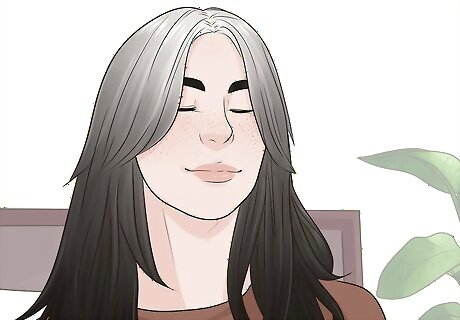
Soft black Rather than choosing jet black, a soft black gives your hair a more subtle transition between your greys so it isn’t as noticeable. Soft black also adds extra sheen and shine to your hair for a clean, healthy appearance. Try this dark color as lowlights or in a grombre style to really accentuate your look.
Blending Grey Roots

Apply a temporary color powder to your roots. Choose a color powder that matches your natural hair color to use on your roots. Dab the end of an applicator brush in the color powder to coat the bristles. Part your hair to expose your roots, and gently brush the powder onto your hair and scalp. Push the bristles down so the powder stays on your hair until you decide to wash it out. Root cover up powder is waterproof, so it will hide your greys in the rain or if you go swimming, but will come out once you use shampoo.
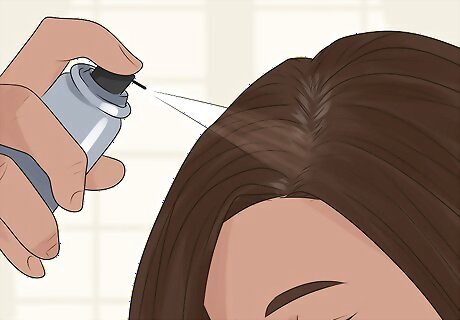
Use a root concealer spray to match your natural color. Pick concealer spray that matches your natural hair color. Part your hair once it’s dry to expose the grey roots starting to grow back in. Hold the concealer spray a few inches from your head and press down on the button to apply it to your roots. Quickly move the spray back and forth over your roots until it completely covers your grey hair. Concealer spray comes out with shampoo, so reapply it every time you wash your hair.
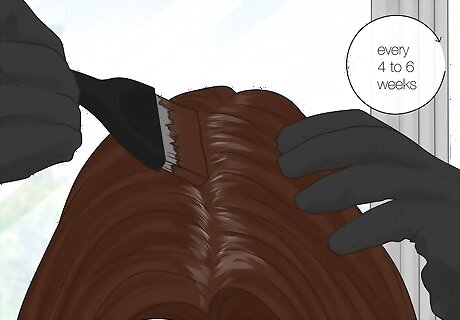
Touch up your roots with dye every 4–6 weeks. If your greys are starting to grow back in, darken your roots again after about a month of your initial dye job. Either visit your hairstylist or dye your hair at home with a box dye matching your natural color. Permanent dyes last the longest if you want your color to stay. If you want to test out a different dye color, try using semi- and demi-permanent dyes that will fade after a few washes.
Transitioning to Natural Grey

Get a short haircut to make the transition look more natural. If you don’t like the look of long silver strands in your hair, then visit your stylist for a haircut. Let your greys grow out about 2 inches (5.1 cm) so you have a good starting point for your hair. Then, try a bob cut or get a pixie cut for a fashionable and low-maintenance hairstyle that make your greys look great. Talk to your stylist to figure out what haircut works best with your face shape. Round and oval faces work great for pixie cuts while diamond and heart-shaped faces look amazing with a layered bob.
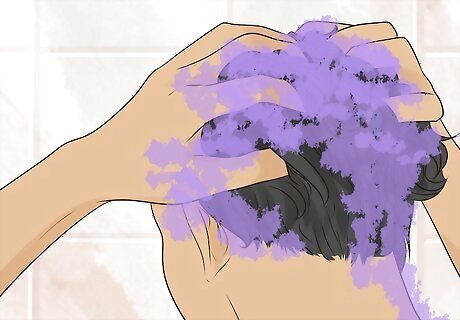
Use blue or purple shampoo to prevent hair from looking brassy. Grey hair tends to look dull or yellowed compared to your natural color, but a tint-correcting shampoo can help mask those unwanted colors. Once or twice a week, lather the shampoo into your hair working from your roots down to the ends. After you finish washing, just rinse the shampoo out so your greys look their best. If most of your hair has gone grey, then use shampoo made for grey hair since it will help rehydrate your hair and prevent your silver strands from looking dull.
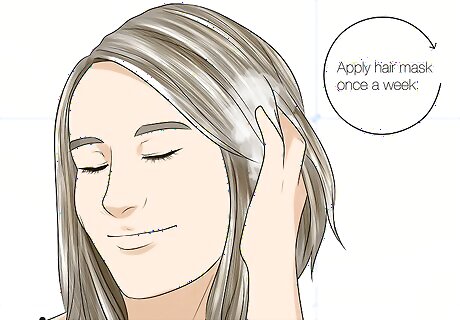
Apply conditioner and hair masks to keep your hair healthy. Because greys are coarser than your natural hair, work a lightweight conditioner into your hair a few times every week. Work the conditioner deep into your hair so it stays moisturized and hydrated. Once a week, apply a hair mask from your roots to your tips. Leave the mask in for around 10–30 minutes so the nutrients can soak in before rinsing it out.



















Comments
0 comment